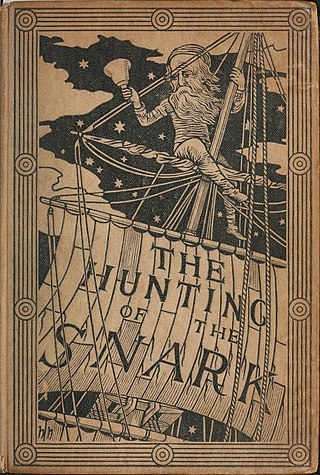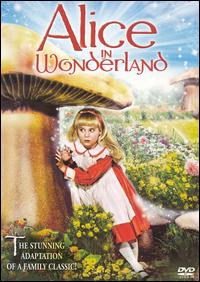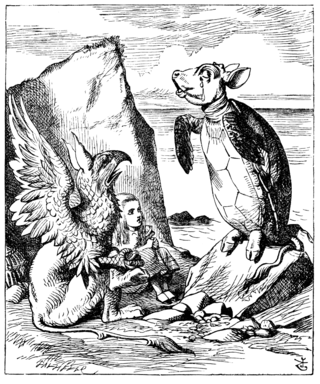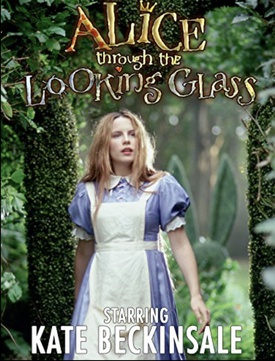
The Dodo is a fictional character appearing in Chapters 2 and 3 of the 1865 book Alice's Adventures in Wonderland by Lewis Carroll. The Dodo is a caricature of the author. A popular but unsubstantiated belief is that Dodgson chose the particular animal to represent himself because of his stammer, and thus would accidentally introduce himself as "Do-do-dodgson".

"Jabberwocky" is a nonsense poem written by Lewis Carroll about the killing of a creature named "the Jabberwock". It was included in his 1871 novel Through the Looking-Glass, the sequel to Alice's Adventures in Wonderland (1865). The book tells of Alice's adventures within the back-to-front world of the Looking-Glass world.

Through the Looking-Glass, and What Alice Found There is a novel published on 27 December 1871 by Lewis Carroll, a mathematics lecturer at Christ Church, University of Oxford, and the sequel to Alice's Adventures in Wonderland (1865). Alice again enters a fantastical world, this time by climbing through a mirror into the world that she can see beyond it. There she finds that, just like a reflection, everything is reversed, including logic.

The Hunting of the Snark, subtitled An Agony, in Eight fits, is a poem by the English writer Lewis Carroll. It is typically categorised as a nonsense poem. Written between 1874 and 1876, it borrows the setting, some creatures, and eight portmanteau words from Carroll's earlier poem "Jabberwocky" in his children's novel Through the Looking-Glass (1871).

The Cheshire Cat is a fictional cat popularised by Lewis Carroll in Alice's Adventures in Wonderland and known for its distinctive mischievous grin. While now most often used in Alice-related contexts, the association of a "Cheshire cat" with grinning predates the 1865 book. It has transcended the context of literature and become enmeshed in popular culture, appearing in various forms of media, from political cartoons to television, as well as in cross-disciplinary studies, from business to science. Often it is shown in the context of a person or idea that is purposefully confusing or enigmatic. One distinguishing feature of the Alice-style Cheshire Cat is the periodic gradual disappearance of its body, leaving only one last visible trace: its iconic grin. He belongs to the Duchess.

Alice in Wonderland is a 1985 American two-part made-for-television adventure family fantasy musical film of Lewis Carroll's books Alice's Adventures in Wonderland (1865) and Through the Looking-Glass (1871). An Irwin Allen production, it used a huge all-star cast of notable actors and actresses. The title role was played by Natalie Gregory, who wore a blonde wig for this miniseries. Alice in Wonderland was first telecast December 9, 1985, and December 10, 1985, at 8:00pm EST on CBS.

A bandersnatch is a fictional creature in Lewis Carroll's 1871 novel Through the Looking-Glass and his 1874 poem The Hunting of the Snark. Although neither work describes the appearance of a bandersnatch in great detail, in The Hunting of the Snark, it has a long neck and snapping jaws, and both works describe it as ferocious and extraordinarily fast. Through the Looking-Glass implies that bandersnatches may be found in the world behind the looking-glass, and in The Hunting of the Snark, a bandersnatch is found by a party of adventurers after crossing an ocean. Bandersnatches have appeared in various adaptations of Carroll's works; they have also been used in other authors' works and in other forms of media.

The Snark is a fictional animal species created by Lewis Carroll. This creature appears in his nonsense poem The Hunting of the Snark. His descriptions of the creatures were, in his own words, unimaginable, and he wanted that to remain so.

Alice in Wonderland is a 1951 American animated musical fantasy comedy film produced by Walt Disney Productions and released by RKO Radio Pictures. It is based on Lewis Carroll's 1865 novel Alice's Adventures in Wonderland and its 1871 sequel Through the Looking-Glass. The production was supervised by Ben Sharpsteen, and was directed by Clyde Geronimi, Wilfred Jackson, and Hamilton Luske. With the voices of Kathryn Beaumont, Ed Wynn, Richard Haydn, Sterling Holloway, Jerry Colonna, Verna Felton, J. Pat O'Malley, Bill Thompson, and Heather Angel, the film follows a young girl Alice who falls down a rabbit hole to enter a nonsensical world Wonderland that is ruled by the Queen of Hearts, while encountering strange creatures, including the Mad Hatter and the Cheshire Cat.

The Mock Turtle is a fictional character devised by Lewis Carroll from his popular 1865 book Alice's Adventures in Wonderland. Its name is taken from a dish that was popular in the Victorian period, mock turtle soup.
Bill the Lizard is a fictional character appearing in Lewis Carroll's 1865 novel Alice's Adventures in Wonderland.

Lewis Carroll's books Alice's Adventures in Wonderland (1865) and Through the Looking-Glass (1871) have been highly popular in their original forms, and have served as the basis for many subsequent works since they were published. They have been adapted directly into other media, their characters and situations have been appropriated into other works, and these elements have been referenced innumerable times as familiar elements of shared culture. Simple references to the two books are too numerous to list; this list of works based on Alice in Wonderland focuses on works based specifically and substantially on Carroll's two books about the character of Alice.

Wonderland is the debut studio album from the indie rock band Forgive Durden. It was released by Fueled by Ramen on May 9, 2006. The album makes references to the works of Lewis Carroll, including Alice's Adventures In Wonderland, and Jabberwocky as well as works by others such as The Wizard of Oz by L. Frank Baum and Newsies by Kenny Ortega.

Return to the Last Chance Saloon is the second studio album by English rock band The Bluetones, released on 9 March 1998. The album is currently certified Gold by the BPI. Its offspring singles were "Solomon Bites the Worm", "If...", "Sleazy Bed Track" and "4-Day Weekend".

The Gryphon is a fictional character devised by Lewis Carroll in the popular 1865 book Alice's Adventures in Wonderland. True to the conventional view of a griffin, he has the head, talons, and wings of an eagle and the body of a lion.

The Red Queen is a fictional character and the main antagonist in Lewis Carroll's fantasy 1871 novel Through the Looking-Glass. She is often confused with the Queen of Hearts from the previous book Alice's Adventures in Wonderland (1865), although the two are very different.

The White King is a fictional character who appears in Lewis Carroll's 1871 fantasy novel Through the Looking-Glass. Aside from Alice herself, he is one of the earliest chesspieces that are introduced into the story. Although he does not interact with Alice as much as the White Queen does, because Alice becomes a pawn on his side of the Chess-game, he is, on some levels, the most important character within the story at least as far as the game is concerned. He is not to be confused with the King of Hearts from Alice's Adventures in Wonderland.

Jabberwocky, an adult pantomime by Andrew Kay, Malcolm Middleton and Peter Phillips, is a musical based on the English 1871 poem of the same name by Lewis Carroll. The music, book and lyrics are by Malcolm Middleton, Andrew Kay and Peter Philips, with additional material by Robert Kay and by many members of the original cast.

Alice through the Looking Glass is a 1998 British fantasy television film, based on Lewis Carroll's 1871 book Through the Looking-Glass, and starring Kate Beckinsale.

















